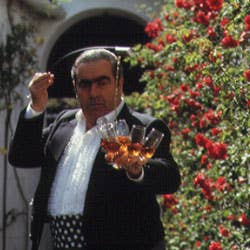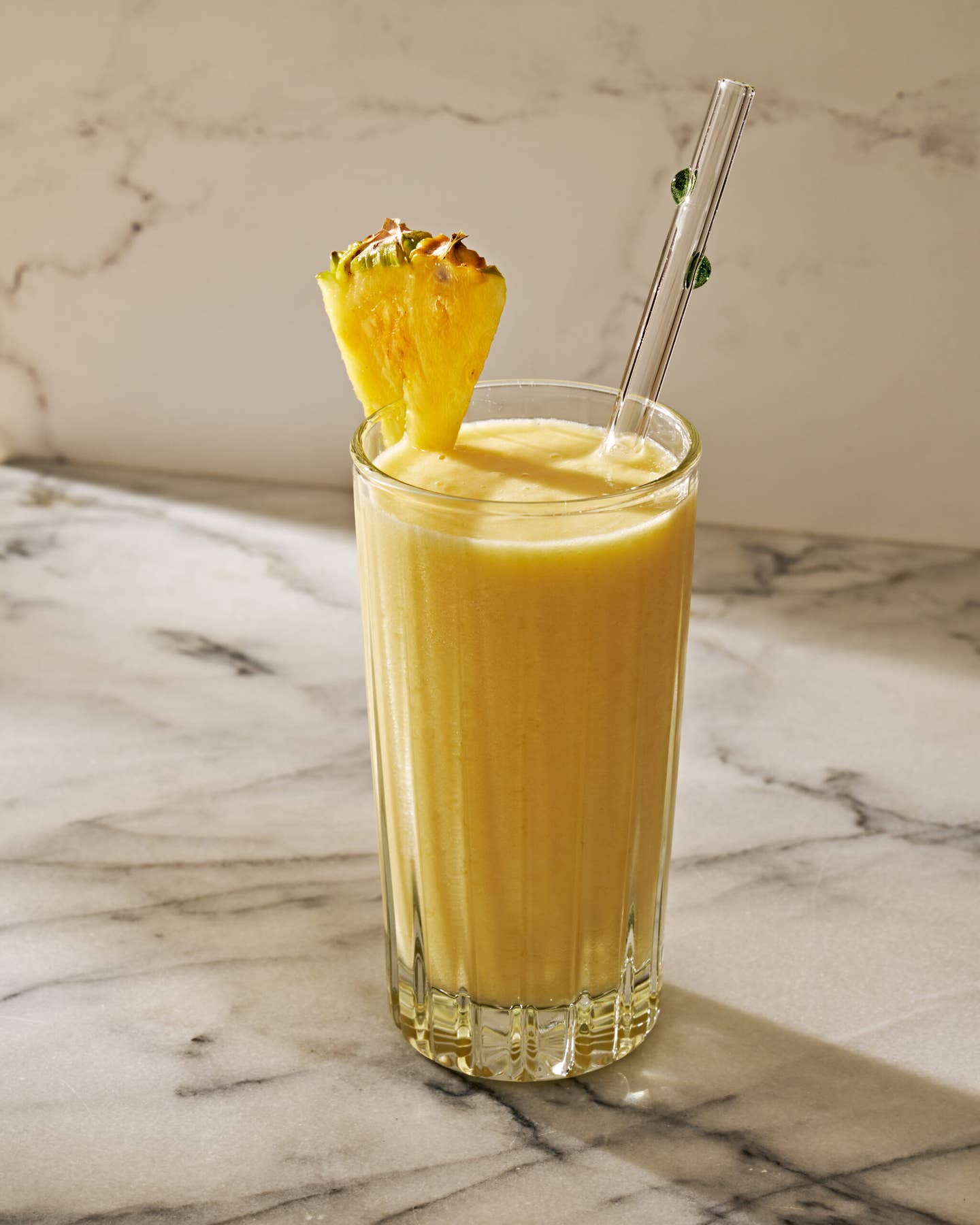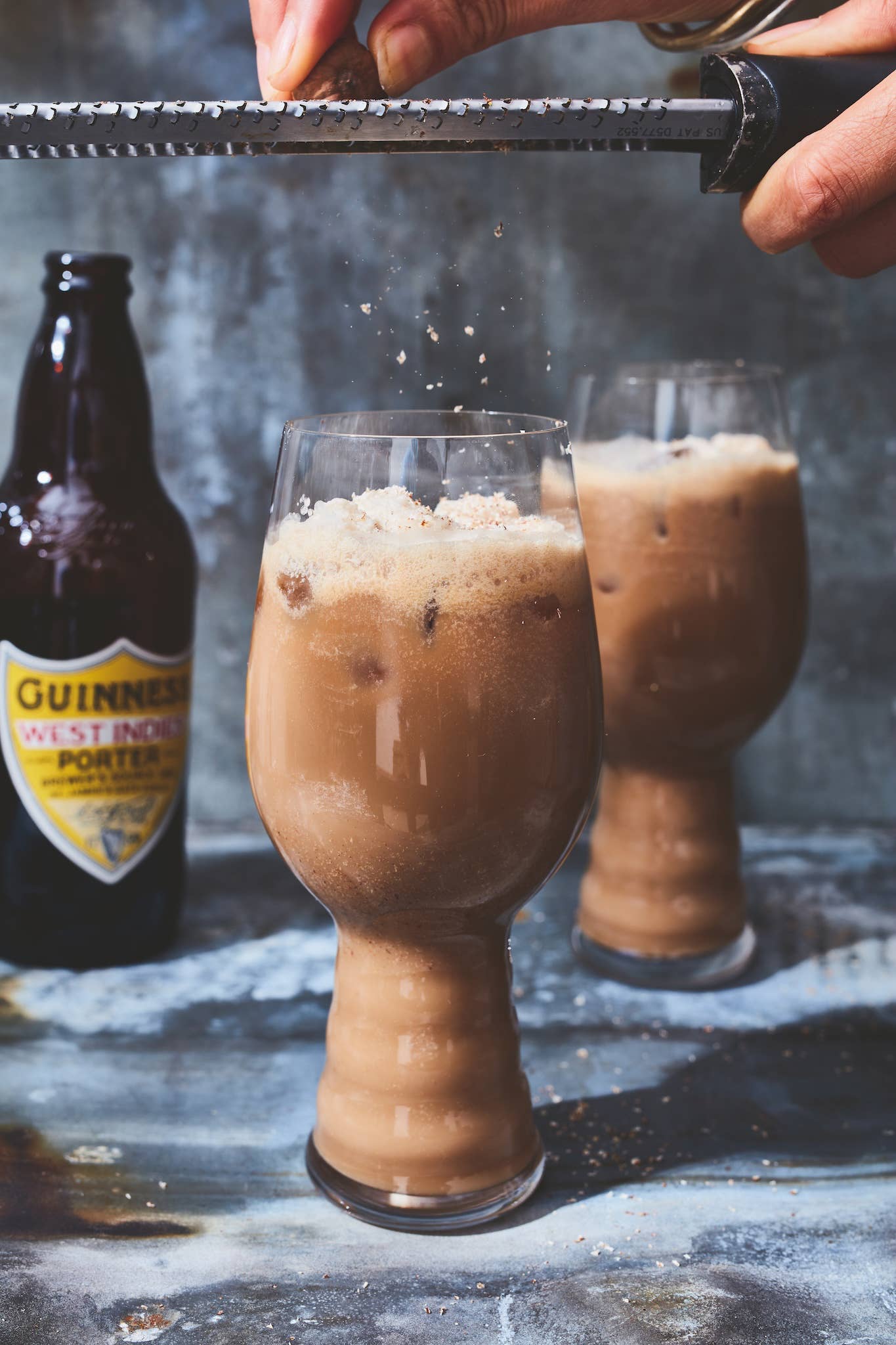
Spain’s Proudest Wine
Andalusia is a coarse and unsubmissive expanse of land, slightly smaller than Indiana, stretching across southern and southwestern Spain. It is one of the poorest of the country's 17 autonomous regions, and is many miles, both physically and psychologically, from Madrid and Barcelona, Spain's largest and most influential cities. It is also, though, home to nearly all that we consider quintessentially Spanish: Bullfighting and flamenco come from here, and are deeply grounded in Andalusian tradition; Andalusia is Spain's Gypsy country; tapas are an Andalusian invention. It is Andalusia that yields all those standard mental snapshots we have of Spain—narrow streets lined with whitewashed houses, wrought-iron gates opening onto flower-strewn courtyards, dark eyes flashing from behind lace mantillas. And Andalusia is the home of sherry, Spain's own wine.
If the cultural imagery of Andalusia is known worldwide and has come to seem emblematic of Spain as a whole, it is not the fault of the Andalusians. Andalusians are not self-promoters. They're an insular people, content with their own patterns and prejudices to the point of haughtiness.
Living for a time in Seville, I became a bullfighting aficionado, wrote a book about the spectacle, discovered first-hand how tenaciously provincial the Andalusians can be—and bought into the lifestyle, more or less. I have since flown to Spain every year to see my favorite matadors, recalibrating my dinner hour ever later as time goes on. I take siestas. I eat plates of exquisite jamon serrano. I drink sherry.
All genuine sherry is made in and around three towns in Andalusia's lower lefthand corner: Jerez de la Frontera, El Puerto de Santa Maria (or just Puerto), and Sanlucar de Barrameda. (The word sherry is an English corruption of Jerez.) I first tasted sherry on its home ground, a block from the Jerez bullring, before a bullfight, at a tiny bar crammed with taurine memorabilia and old men. A glass of fino, one of the lightest, driest sherries, was poured for me. It was the color of sunshine, but had a numbing bite that I frankly didn't find very appealing.
A short time later, at the mottled old bullring itself, Rafael de Paula—an aging Gypsy matador with a reputation as the most frightened man in Spain—briefly conquered his demons to earn a bull's ear as a trophy; then Paco Ojeda, a matador from nearby Sanlucar, showed his rigorously geometric style to equal acclaim. For aficionados, it was a rare afternoon. Back at the same small bar for celebrations later, I had another glass of fino, and then a third—and before I knew it, the wine's allure had captivated me.
Americans usually think of sherry, if we think of it at all, as fuel for faculty receptions, or maybe as a bedtime libation for the elderly. But in Spain, and especially in Andalusia, sherry is consumed in copious amounts, with gusto, as a part of daily life—an amontillado or chilled fino before a meal, more fino with the flavorful local fish (almost invariably fried), a sweet oloroso viejo or pedro ximenez with dessert.
Never the most creative of businessmen, the Andalusians have long been content to make and drink sherry themselves, and offer it for sale to others only on their own terms. As a result, it is not exactly blazing through the international marketplace. But what, if anything, is being done about this? Are sherry producers at last paying more attention to the exigencies of marketing? Do economic concerns now outweigh hauteur? On my most recent trip to Spain I attempted to find out.
A Tuesday morning finds me sipping sherry in a cellar in Jerez with Miguel Valdespino, of the family-owned house of Valdespino S.A. All Jerez is talking about the previous Sunday's bullfight, and the bodega is no exception. Valdespino shows me a photograph from 1910 of the immortal matador Juan Belmonte, plugging the firm's Inocente (the industry's only single-vineyard fino). But he's not, he confesses, a fan of the bulls. Neither is he a smoker, nor much of a drinker. Yet for all that, he remains unmistakably Andalusian.
His family connections form an intricate web throughout the sherry industry—and indeed the history of Spain. When I tell him that I have an appointment later with Felipe Gonzalez-Gordon at another sherry house, Gonzalez Byass, he first mentions that Felipe is his late brother's brother-in-law, then tells me that to find him I must pass the statue of a man on horseback that dominates Jerez's main square. "That's Primo de Rivera, the old dictator of Spain," Valdespino says. "He was my uncle."
Valdespino, founded in 1740, is one of the smaller sherry houses, a complex of some 70 separate bodegas or aging structures, each one filled with casks stacked in the solera system. Valdespino is a gracious man, but he can't hide the scorn he feels for the mass-produced sherries that roll out of the bodegas owned by multinational corporations. "I have an old camera that I have to adjust by hand," he says. "Of eight photographs, I get two exceptional ones, two or three that are not so good, and the rest blank. I also have a modern camera. The photos it takes are fine but never exceptional. I don't want to make sherry that way."
Sherry production is a brittle art. Climatic conditions, not the laws of economics, dictate where bodegas must be placed. "If you have a bodega open to the sea, and suddenly they build a row of flats and block the access of the breeze," says Valdespino, "that ruins it."
Many of his bodegas look as they did centuries ago. Valdespino comes from a family that never throws anything away, he says. He shows me the first car he ever bought his wife, a 1963 SEAT, still in running condition, in a spare garage. "If you never save anything modern," he says, "you'll never have anything old."
He saves sherry, too. The essence of good sherry is patience. For that reason, family-run bodegas have prospered through the centuries. "The young person who is going to be on the job for just three years and then promoted somewhere else isn't interested in putting away a cask for 50 years," Valdespino notes. In each of the classic cars he collects—no, not collects, just can't bear to be rid of—Valdespino has put a barrel of single-vintage sherry, for his children.
That same afternoon, I meet Felipe Gonzalez-Gordon for lunch—a salad of fish roe, then sauteed squid and gilt-head bream from the grill, washed down with Gonzalez Byass' flagship fino, Tio Pepe. Gonzalez-Gordon—no longer active in the company, but still a shareholder and spokesman—is a cousin of Jose Ignacio Domecq, and related, by birth or marriage, to the Valdespinos, Gordons, Sotos, and Diezes—all sherry families. "I drink oloroso seco in the winter and Tio Pepe year-round," he says. "I have to. I'm a Gonzalez."
Tio Pepe is the best-known fino in the world, and Gonzalez-Gordon helped make it that way. For years he roamed the continents, putting sherry in Panama, Hong Kong, deepest Kansas. The tiny amounts he sold in such markets couldn't justify his expenses, but it helped give Tio Pepe international brand recognition.
Gonzalez-Gordon thinks sherry producers made a big mistake long ago when they decided to package their products with easily removable cap-topped corks instead of conventional wine corks. As a result, he says, sherry gets treated like hard liquor, not like wine. Once opened, a bottle can sit on a back shelf forever. "I can remember ordering Tio Pepe at the bar in a first-class hotel in Chicago," he says, "and it had turned brown." He bought the rest of the bottle, then came back the next night and ordered Tio Pepe again. This time, served from a new bottle, it was as fresh and clear as it was supposed to be. But he made a mark on the bottle's label, and when he returned to the hotel nine months later, he found the same bottle still being served—brown and spoiled again. If you had tasted that sherry and didn't know how sherry should taste, you would never order it again.
Gonzalez Byass has made some concessions to the changing marketplace, says Gonzalez-Gordon. Tio Pepe was 17 percent alcohol, for instance, but is now 15.5 percent in Spain—because consumers demanded a lighter wine. And though nearly all sherry is solera-aged and therefore non-vintage by definition, Gonzalez Byass started exporting single-vintage olorosos and amontillados, aged outside the solera system. Gonzalez-Gordon considers this an indulgence. "If you want to sell a very special 200—or even 4,000—cases, to connoisseurs," he says, "that's fine. But you can't maintain what we have by selling a few rare sherries. With Tio Pepe, we can make large quantities of a high-quality product, with every batch exactly the same. That's what people want."
That makes sense for Gonzalez Byass. But what if your business is far smaller and based almost entirely on exports, with no major domestic brand in Spain? Emilio Lustau S.A. asked itself that question in 1981. And in response, the firm decided to try something revolutionary: It began to sell unblended almacenista sherries. Almacenistas—literally "shopkeepers" or "wholesalers"—are craftsmen who produce small quantities of sherry each year on a boutique level. All the large firms buy a bit of finished sherry from the almacenistas and blend it into their own stock. Lustau was itself an almacenista operation until 1950, when it began shipping wines on a larger scale.
Lustau executive Manolo Arcila is from Jerez ("I was born under a vine," he says), and started at the company in 1965 at the age of 16—so it wasn't as though an outsider had arrived to shake things up. But the rest of the sherry world thought he had gone insane. They'd see him over lunch at La Tasca or El Bosque, or at the bullring, and grab his lapels. "They'd say, 'You're crazy! You're mad! What are you doing?'" Arcila recalls.
But he wouldn't be deterred. In 1985, he sent cases of the almacenista sherries to influential wine writer Robert Parker. Parker rated them highly in his newsletter, which gave them automatic entree into the upper echelons of American wine-drinking society. In 1988, Arcila did consumer research—consumer research!—and developed a new, more curvaceous bottle shape. He also put labels on the bottles, in English, explaining what each sherry was.
Soon, the almacenistas were being perceived as the equivalent in quality of single-malt scotch or single-vineyard cabernet. They may also have inspired one of the largest sherry houses to try marketing innovations of its own. Osborne y Cia, S.A., founded in 1772, sells a full range of sherries under several labels (those famous black metal bull cutouts that stand on hills all over Spain are their "billboards") and a wide variety of other wines, as well as spirits and food products. It's one of the larger family-owned corporations in Spain.
Osborne always bottled small quantities of rare sherries as gifts for its clients, then began selling them as well. These are not almacenistas, but blended solera sherries from Osborne barrels. At the Osborne headquarters, with its manicured gardens and grand halls decorated with bullfight posters, I learn the difference between the Osborne's bottlings and Lustau's: "Some of the almacenistas are called rare sherry, but are they really rare? … You have to have the solera from years and years. It's priceless; you can't just come in and do this." This is perhaps a reference to the fact that Lustau has only been making sherry since 1896.
The director of Osborne's international division continues, "It's true that sherry has gone down a bit in image lately, and to create some interest in the product, sometimes you have to do things that are a little bit different. The volume of these special sherries of ours is minuscule, of course—with some, we can sell no more than 250 bottles a year—so it's really more public relations than anything else. But there does seem to be a great deal of interest in these rarities. And the more people are aware of rare sherries, and realize how unique and versatile they are, the better it is for sherry as a whole."
Keep Reading
Continue to Next Story










